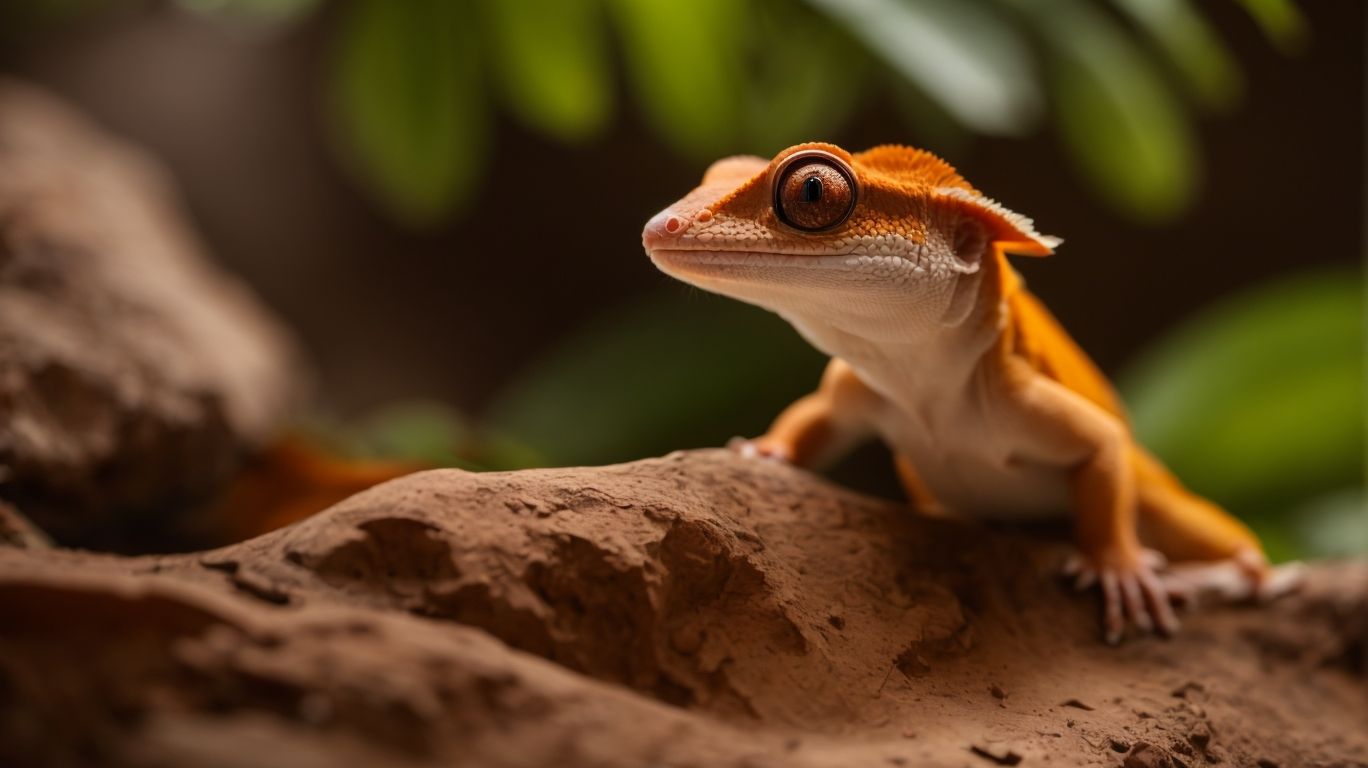
Optimal Temperature and Humidity for Crested Gecko Health
Crested geckos are fascinating creatures that make great pets, but they have specific temperature and humidity needs to thrive.
In this article, we will explore the ideal temperature and humidity levels for crested geckos, as well as the reasons why these factors are crucial for their health.
We will also discuss the potential consequences of temperature and humidity being too high or too low, and provide practical tips on how to monitor and adjust these conditions for your pet’s well-being.
Whether you are a new or experienced crested gecko owner, this article will provide valuable insights into creating the optimal environment for your pet.
What is the Optimal Temperature and Humidity for Crested Geckos?
Maintaining the optimal temperature and humidity levels is crucial for the well-being and health of Crested Geckos.
Creating a comfortable and balanced environment for geckos is crucial, and temperature levels play a significant role in achieving this. During the day, it’s recommended to maintain a consistent temperature between 72-78°F (22-25°C), with a slight drop at night. This mimics their natural habitat and promotes healthier metabolic functions and activity levels.
In addition to temperature, humidity is also essential for Crested Geckos. Ideally, humidity levels should range from 60-80%, ensuring proper shedding and hydration. When these conditions are met, geckos thrive, exhibiting vibrant colors, strong immunity, and overall well-being.
Why is the Right Temperature and Humidity Important for Crested Gecko Health?
The right temperature and humidity are essential for maintaining the health and well-being of Crested Geckos in their reptile habitat.
Crested Geckos can experience stress, dehydration, and other health issues if they do not have adequate temperature and humidity levels. It’s important to provide an optimal habitat with a temperature range of 72-80°F and humidity around 60-80%. Regular monitoring of these levels is necessary to ensure a comfortable and thriving environment for these delicate creatures.
Proper care for Crested Geckos also involves misting the enclosure, providing hiding places, and using thermometers and hygrometers to maintain ideal conditions for the geckos.
What is the Ideal Temperature for Crested Geckos?
The ideal temperature for Crested Geckos typically falls within a specific range that provides them with the necessary heat and shelter for their well-being.
Maintaining temperatures between 72-80°F (22-27°C) during the day and allowing a slight drop to 65-75°F (18-24°C) at night is crucial for these reptiles.
Proper heat and shelter are essential as they are cold-blooded creatures relying on external sources to regulate their body temperature.
It is vital to monitor the temperature consistently using thermometers to ensure their environment remains within the recommended range.
Unsuitable temperature conditions can lead to stress, illness, or even death in Crested Geckos.
What Happens if the Temperature is too High?
If the temperature in the Crested Gecko habitat becomes too high, it can adversely affect their health, well-being, and overall environmental conditions.
High temperatures can lead to heat stress, dehydration, and respiratory issues in Crested Geckos. It is crucial to provide adequate ventilation and cooling options to prevent these adverse effects.
Continuous monitoring of the temperature using a reliable thermometer is essential to ensure that the habitat remains within the optimal range. Offering shaded areas and misting the enclosure can help regulate the temperature and create a comfortable environment for these unique reptiles.
What Happens if the Temperature is too Low?
In cases where the temperature in the Crested Gecko habitat drops too low, it can negatively impact their health, overall well-being, and the environmental conditions they require.
Low temperatures can lead to various health issues in Crested Geckos, such as decreased immune function, digestive problems, and respiratory infections. It can disrupt their metabolism, leading to lethargy and decreased activity.
Proper temperature monitoring and maintenance are crucial to ensure that the geckos are kept within their optimal temperature range. This can be achieved through the use of heating mats, ceramic heat emitters, or under-tank heating to create a suitable thermal gradient within their habitat.
What is the Ideal Humidity for Crested Geckos?
The ideal humidity for Crested Geckos falls within a specific range that provides them with the necessary moisture and shelter for their overall well-being.
Maintaining humidity levels between 60% and 80% is crucial for Crested Geckos, mirroring their natural habitat in the rainforests of New Caledonia.
Monitoring this environment is vital, as excessive humidity can lead to respiratory issues and skin problems, while low humidity can cause dehydration and shedding difficulties.
Proper moisture allows them to regulate their hydration and supports healthy shedding.
Offering suitable shelter and moisture gradients within their habitat promotes natural behaviors and reduces stress, contributing to their overall health and vitality.
What Happens if the Humidity is too High?
Excessively high humidity levels in the Crested Gecko habitat can have adverse effects on their health, overall well-being, and the essential environmental conditions they rely on.
High humidity levels in a Crested Gecko’s enclosure can have negative effects on their health. This includes respiratory issues, skin infections, and increased stress, which can weaken their immune system and make them more susceptible to illnesses.
In addition, prolonged exposure to high humidity can lead to the growth of mold and bacteria in the enclosure, creating an unsanitary living environment for the geckos. It is essential for keepers to regularly monitor and regulate humidity levels to ensure the optimal health and comfort of their Crested Geckos.
What Happens if the Humidity is too Low?
If the humidity in the Crested Gecko habitat drops too low, it can have negative effects on their health, overall well-being, and the crucial environmental conditions they require for thriving.
This can lead to issues such as dehydration, difficulty shedding, and respiratory problems.
Crested Geckos require a humidity level of around 60-80% to support their well-being, as it mimics their natural habitat in the tropical forests of New Caledonia. When humidity levels fall below the ideal range, it can impact their ability to regulate moisture, leading to stress and potential health complications.
It is crucial for owners to carefully monitor and maintain proper humidity levels to ensure the optimal health and thriving of their Crested Geckos.
How to Monitor Temperature and Humidity for Crested Geckos?
Monitoring the temperature and humidity in the Crested Gecko habitat is essential for ensuring that their environment provides the ideal conditions for their well-being and care.
It’s crucial to use reliable tools like digital thermometers and hygrometers to accurately measure and monitor these parameters.
Maintaining the right temperature range of 72-80°F and humidity levels between 50-70% is vital for their health. Employing heat mats or ceramic heaters can help regulate temperature, while misting systems or spray bottles aid in maintaining proper humidity.
Regular checks and adjustments ensure that the Crested Geckos thrive in a comfortable and conducive environment.
What Tools Can You Use to Measure Temperature and Humidity?
To optimize readability and SEO, it’s advisable to break paragraphs into concise, easily digestible sentences. Add
tags to the text given and aim for a maximum of two sentences per
tag section, allowing multiple
tags. This approach enhances user experience and search engine indexing. Also, add tags to important keywords and phrases, and tags for quotes.
Various tools, including thermometers and hygrometers, can be utilized to measure and monitor the temperature and humidity in the Crested Gecko environment, ensuring optimal conditions for their well-being.
Maintaining the ideal habitat for Crested Geckos requires the use of various tools. One such tool is a thermometer, which accurately measures the temperature levels within the enclosure. This allows caretakers to make necessary adjustments to ensure the geckos’ comfort.
Another essential tool is a hygrometer, which measures humidity levels. This is crucial for the shedding and hydration of these reptiles. By monitoring these factors, caretakers can prevent health issues and create a conducive environment for the geckos’ overall thriving and reproductive success.
How Often Should You Check the Temperature and Humidity?
Regularly checking the temperature and humidity in the Crested Gecko habitat is essential for maintaining their well-being and ensuring that the environmental conditions remain within the optimal range.
Maintaining a consistent environment is crucial for the health of Crested Geckos, as they are sensitive to fluctuations in temperature and humidity.
It is recommended to check the temperature and humidity levels at least once a day, preferably in the morning and evening. This regular monitoring allows for timely adjustments, ensuring that the habitat provides the necessary warmth and moisture for the geckos’ comfort and physiological functions.
Neglecting these factors can lead to stress, inadequate shedding, and overall health issues. By prioritizing regular checks, owners can create a comfortable and supportive environment for their pet Crested Geckos.
How to Adjust Temperature and Humidity for Crested Geckos?
Making adjustments to the temperature and humidity levels is crucial for ensuring that the Crested Geckos’ environment maintains the ideal conditions for their balanced well-being and care.
To optimize readability and SEO, it’s advisable to break paragraphs into concise, easily digestible sentences. Add
tags to the text given and aim for a maximum of two sentences per
tag section, allowing multiple
tags. This approach enhances user experience and search engine indexing.
One way to create a comfortable habitat for Crested Geckos is by installing a hygrometer to monitor humidity levels and a digital thermometer to keep track of the temperature. It’s important to provide a temperature gradient by using heat sources like under-tank heaters or ceramic heat emitters to create warm and cool areas. Additionally, regularly misting the enclosure or using a hand sprayer can help maintain adequate humidity levels for the geckos to thrive.
What Can You Do to Lower Temperature and Increase Humidity?
To lower the temperature and increase humidity in the Crested Gecko habitat, measures such as adjusting ventilation and introducing moisture sources can be implemented, ensuring the ideal conditions for their care and environmental balance.
Creating a comfortable and healthy environment for Crested Geckos requires making adjustments. Proper ventilation regulates temperature and promotes air circulation. Introducing moisture sources, like live plants or a misting system, increases humidity and provides hydration for geckos. These strategies mimic their natural habitat, promoting well-being and reducing the risk of health issues associated with improper temperature and humidity levels.
What Can You Do to Increase Temperature and Lower Humidity?
Implementing methods such as heat sources and adjusting moisture levels can effectively increase temperature and lower humidity in the Crested Gecko habitat, ensuring the balanced conditions essential for their care and environmental well-being.
To create a suitable habitat for your Crested Gecko, it’s important to regulate the temperature within the enclosure. This can be achieved by using a ceramic heat emitter or under-tank heating pad to mimic their natural tropical environment.
In addition, incorporating live plants or a bioactive substrate can help manage humidity levels by promoting natural evaporation and maintaining adequate moisture. These measures not only provide a comfortable environment for your gecko, but also support their physiological and behavioral needs.




No Comments